Best Practices for Efficient Procurement Data Management


Business environments are becoming increasingly data driven—that is an undeniable fact.
This also holds true for procurement, where the importance of data insights cannot be overstated.
Data empowers strategic decision-making based on concrete facts, leading to optimized procurement processes and significant cost savings.
However, this is only achievable when you know how to manage your procurement data efficiently. That involves understanding where to collect data, how to analyze it, and how to share it within your department.
And that’s precisely why we’re here.
In this article, we’ll guide you through the best practices of efficient procurement data management to show you how you, too, can derive benefits from your data.
Efficient procurement data management starts by utilizing tools designed to gather, analyze, and report the data.
Without these tools, achieving data driven procurement is a challenging task.
In many procurement departments, data is abundant but often scattered across different teams, systems, or spreadsheets, making it hard to locate what you need for timely decisions.
But it’s not just that—if this data is being entered into the systems manually, it is also prone to human errors.
However, tools that automate data entering, keep all data in one place, and allow for timely analysis and reporting, can solve these issues.
Therefore, investing in them is the first step you can make toward well-managed procurement data governance.
The tools we have in mind are procurement software, big data platforms, and business intelligence tools.
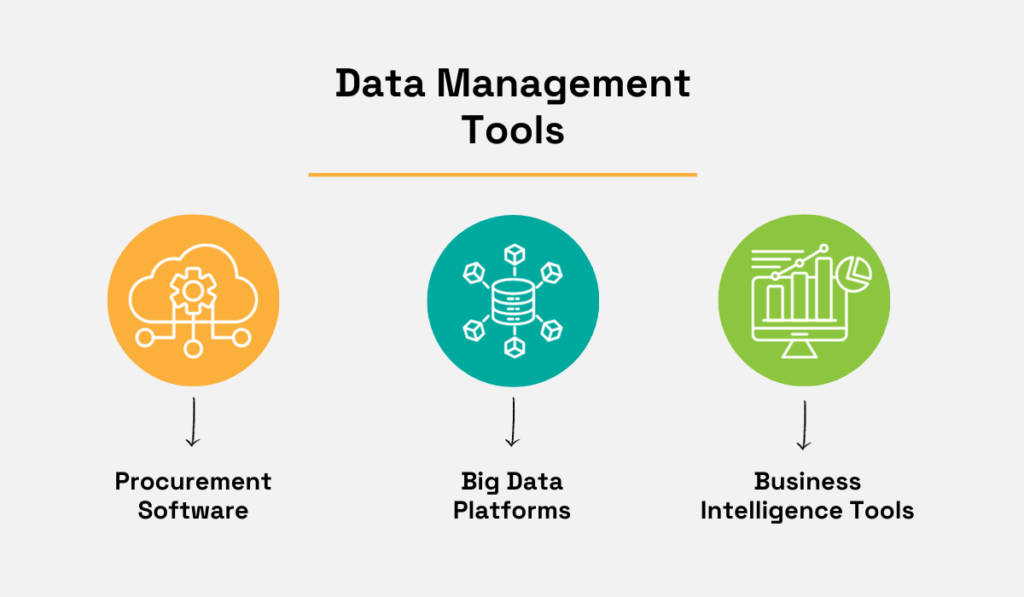
Source: Veridion
Let’s see how they can help you manage your procurement data.
First and foremost, consider procurement software.
This is a tool that centralizes all your procurement data, including supplier information, purchase orders, contracts, and invoices, all within a single platform.
It is the foundation for efficient procurement automation, where tasks like raising purchase requisitions, generating purchase orders, getting approvals, and managing contracts are seamlessly automated.
As you automate these tasks, the software records every action and transaction and creates a repository of accurate procurement data readily available for analysis.
This means no scattered data and no incorrect data due to it being manually entered into the system.
The second tool to embrace in your procurement arsenal is a big data platform, particularly the one housing supplier information.
This is the most important enabler for discovering and sourcing the most reliable suppliers with the fewest risks.
Why?
Because your choice of suppliers will ultimately determine the efficiency and cost-effectiveness of your procurement.
Also, only such platforms can give you the freshest and most accurate information on suppliers, which is necessary for getting insight into their current activities and adherence to industry regulations and sustainability values.
Our big data platform, Veridion, does all of the above.
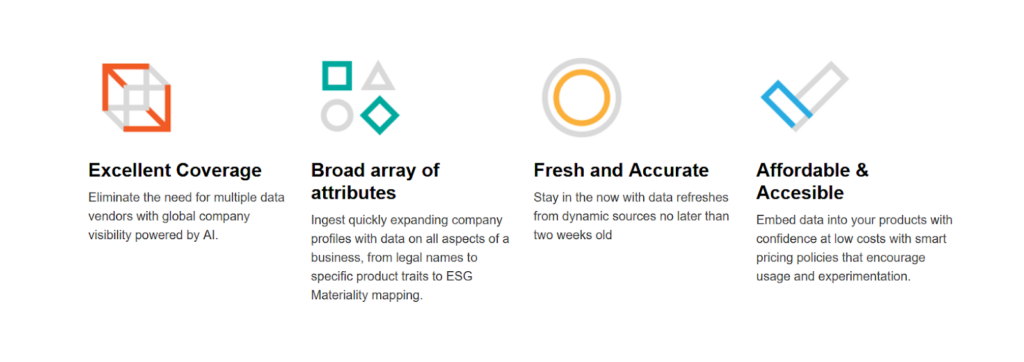
Source: Veridion
Veridion provides information on over 80 million global suppliers, ranging from firmographic data like their size and location to specifics about their products, certifications, and ESG adherence.
All to help you make the right choices in selecting your suppliers and minimizing supplier risks.
The third category of data management tools to consider is business intelligence tools.
These tools are designed to transform your raw procurement data into visually compelling insights.
They enable you to create intuitive charts, graphs, and dashboards that simplify complex procurement data for quick comprehension, which you can then share across your department.
Here’s what that can look like:

Source: G2
When you combine these three types of tools in your procurement data management, you can gain advantages like:
In summary, to manage your procurement data efficiently, you need tools that collect, analyze, and convert data into actionable insights.
These insights can empower you to make informed decisions based on data-driven facts, ultimately enhancing your organization’s efficiency and cost savings.
Collecting just any procurement data, analyzing it, and sharing it with your team members and stakeholders is not enough.
It is crucial to first assess the quality of data and then use only the data that is accurate and up-to-date in order to make informed decisions in your procurement.
If that’s not the case, you can’t be confident in your decision-making.
Regrettably, this lack of confidence in procurement data is widespread, and statistics support it.
A recent survey by SpendHQ and Procurious indicates that around 75% of procurement teams don’t trust the accuracy of the procurement data they present to the stakeholders.

Illustration: Veridion / Data: SpendHQ
So, it isn’t surprising that most (79%) of these stakeholders employ procurement data as indicators but lack the trust to make strategic decisions based on it, or simply don’t trust it at all.
This becomes a significant concern, as Tania Seary, founder and CEO of Procurious, explains in the survey we’ve just quoted:
While procurement’s influence and impact continue to expand, insufficient data confidence hinders its ability to make strategic decisions, drive desired outcomes, and shed its reputation as a cost center.
The survey also sheds light on the reasons behind this lack of confidence.
The problems stem from numerous data sources and scattered information across different systems, leading to data silos.
Additionally, inconsistent processes and reporting compound the issue.
Lastly, there’s the challenge of incomplete or low-quality data.

Illustration: Veridion / Data: SpendHQ
All three are intertwined—when data is scattered all over the place, once you finally access it, it’s not accurate anymore. Consequently, you can’t report the insights to your department to make informed decisions.
That’s why using the automation tools we mentioned earlier is essential.
It is precisely through procurement software and big data platforms that you can raise your data quality and access only the freshest data.
With the automation of purchase orders, invoices, payments, contracts, and supplier management, you have all this data in your system readily available for analysis. Data you can trust.
On the other hand, big data platforms can also solve the problem of mistrust of data by granting access to current supplier information.
The significance of these supplier data sources becomes evident when considering that 58% of businesses lack trust in suppliers updating their information on supplier portals.
Big data platforms effectively address this trust issue by offering near-real-time supplier information.
For instance, our tool updates supplier information weekly, ensuring that data is continually fresh and accurate.
This guarantees you always have reliable data for strategic supplier decisions, which is the cornerstone of productive procurement data management.
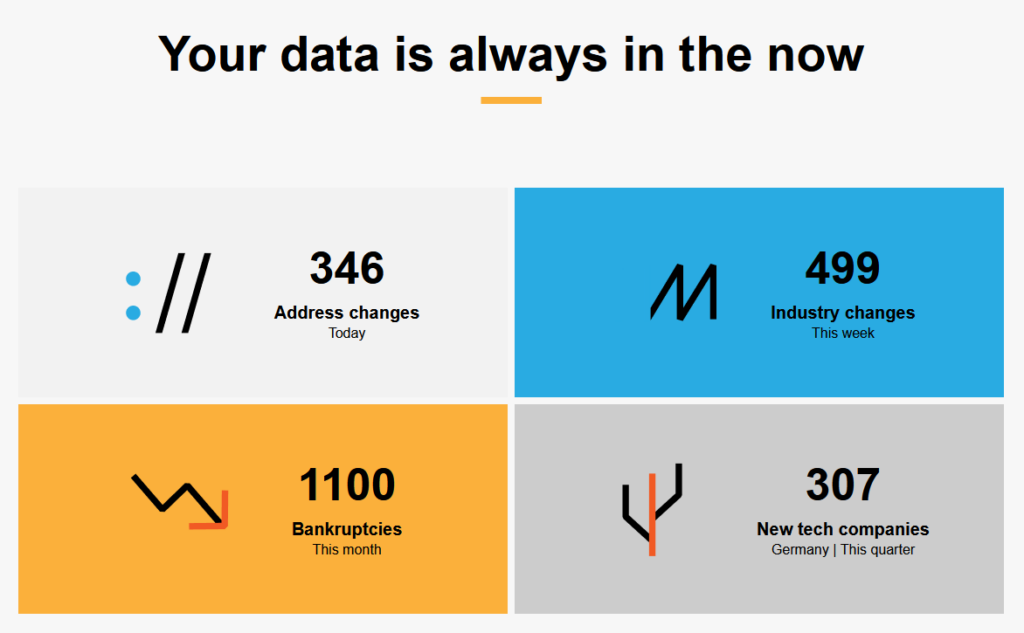
Source: Veridion
And if you’re concerned about adding another data source to your already extensive collection, rest assured that this won’t be an issue with Veridion.
Namely, we’ve designed Veridion to seamlessly integrate into your workflows, keeping your master data up to date and providing the most accurate supplier information to help you stay ahead of changes.
To conclude, statistics show that data quality is one of the biggest challenges of procurement and the reason why procurement teams lack the confidence to make strategic decisions.
With the right solutions, like automation tools and big data platforms, you can overcome this pressing challenge and gain access to the freshest data to make informed decisions.
Efficient procurement data management hinges on finding a middle ground between centralized and decentralized data approaches.
To understand this practice better, let’s clarify the distinction between the two.
Centralized data management means having all your procurement data in one place and making all your procurement decisions from one central department.
This setup makes data management more flexible—it’s easy to change, re-organize, mirror, and analyze data. Additionally, it offers enhanced visibility into the procurement process.
For example, with centralized data, you can easily trace who made a purchase, who approved it, and which supplier it came from.
This information can be invaluable when you need to reorder a product, allowing you to negotiate better deals based on past purchasing history.
It simplifies the process and reveals cost-saving opportunities. Moreover, centralized data management ensures standardization, making data analysis a breeze.
For industries like manufacturing, where uniformity is key, centralized data tracking is essential for controlling the procurement of raw materials efficiently, ensuring quality and cost-effectiveness.

Source: Veridion
On the other hand, in decentralized procurement, individual departments or regional units have the autonomy to manage their unique procurement needs.
This isn’t necessarily bad, but when you want to analyze spending across the entire organization, the fragmented data can cause problems.
It’s decentralized, and there’s no real-time visibility. Different departments have their own little silos of procurement data, so you’ll have to play detective to locate it.
Furthermore, if each unit or department uses different data formats and standards, conducting comprehensive procurement data analytics becomes a mammoth task.
However, procurement isn’t so black and white.
In some cases, decentralized procurement can be more effective, especially when quick decision-making is needed.
For instance, in indirect categories like transport logistics, marketing, and professional services, a more decentralized approach can lead to better insights and tailored solutions.
So, to secure good procurement data governance and get the most from these data worlds, you should bridge the gap between them.
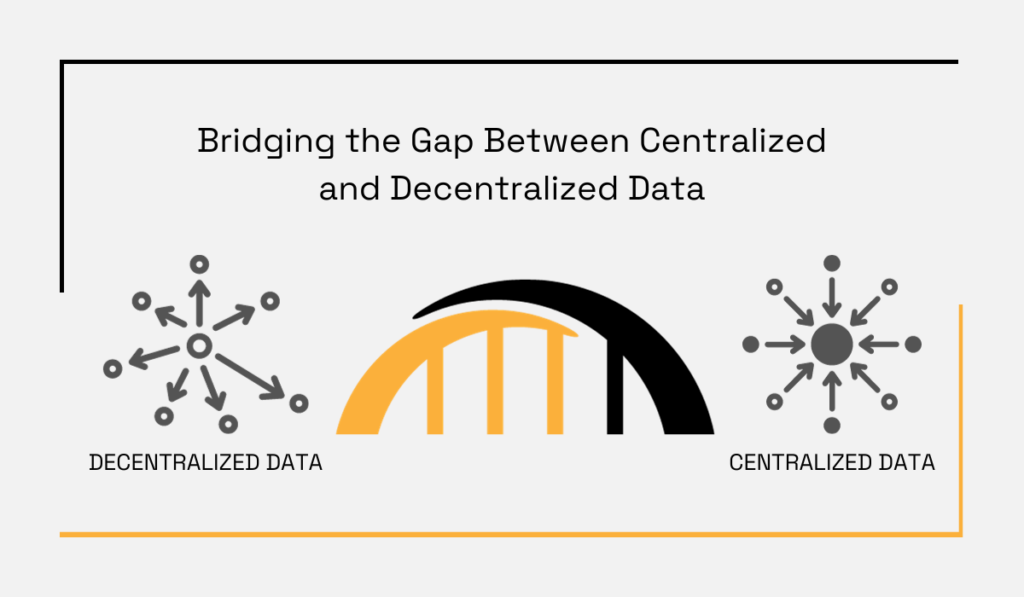
Source: Veridion
Here are some tips on how you can achieve this:
In essence, centralized data can offer more benefits to procurement, such as streamlined data access and management, improved cost control, enhanced data standardization, and simplified data analysis.
Yet, if your organization leans more toward decentralization, it’s not the end of the road.
You can manage this gap and ensure your data is standardized and readily available for analysis through effective data governance, standardization, integration, and collaboration.
Improving your spend data visibility is a vital practice for well-managed procurement data.
Spend visibility refers to the ability to see, analyze, and understand how an organization spends its money.
It’s about having a clear and comprehensive view of your expenses, which can be quite a game-changer for your procurement strategy.
Therefore, spend data shows where your money goes, who is spending it and on what, as well as the suppliers you purchase from.
With these insights, you can control your spending better, thus improving the company’s financial health.
Let’s take a look at why spend data visibility is important for procurement.
| Cost Control | Spend data visibility can help you pinpoint areas of overspending and potential cost-saving opportunities. For instance, imagine data analysis reveals that one department consistently spends significantly more on office supplies than others. This insight could lead to cost-cutting discussions or more favorable negotiations with suppliers. |
| Compliance Monitoring | Clear visibility aids in monitoring compliance with company policies and government regulations. By having a complete view of your spending, you can align it with the rules and avoid the risk of penalties or legal issues. |
| Improving Supplier Relationships | Suppliers are vital partners in procurement. With a better understanding of your spending patterns, you can engage in more informed discussions with suppliers. This might result in negotiations for improved terms, discounts, or enhanced collaboration, as you can cite specific data to support your proposals. |
| Informed Procurement Decisions | Informed decisions are based on data, not guesswork. For example, knowing which suppliers consistently deliver on time and with quality can guide your procurement choices, leading to more efficient and cost-effective procurement decisions. |
So, how can you improve your spend data visibility and reap these benefits?
Firstly, use the right technology tools and automate your procurement process.
Spend analysis tools, for instance, can help you analyze your spend data and achieve the benefits mentioned above.
These tools can crunch numbers, identify spending patterns, and generate insights, making it easier to see where your money is going.
Secondly, if your data is still scattered across various departments, systems, and platforms, consider integrating these multiple data sources into a unified data pool.
This consolidation provides a holistic view of your spending, making it easier to identify trends and areas for improvement.
Lastly, categorize your spend data effectively.
Think of it as sorting items into neatly labeled boxes. These categories can represent different departments, types of products, or suppliers.
Such categorization simplifies the analysis process and lets you clearly identify your most significant spending areas.
Ultimately, by ensuring your spend data is visible and ready to analyze, you will be able to uncover cost-saving opportunities and minimize risks.
This will make your procurement more efficient.
The final practice we’ll discuss today to enhance your procurement data management is collaboration.
In a nutshell, it’s about encouraging open communication and teamwork within your department and extending the sharing of procurement data insights to the entire organization.
This is the final puzzle piece to make your procurement data management efficient and effective.
To begin, within your procurement data team, collaboration is paramount.
It starts with clearly understanding who plays what role in data management and how their contributions impact the overall data quality.
Once your team is well-versed in the importance of data in procurement decision-making and they’re committed to using only high-quality data, you can share this valuable information with the rest of your organization.
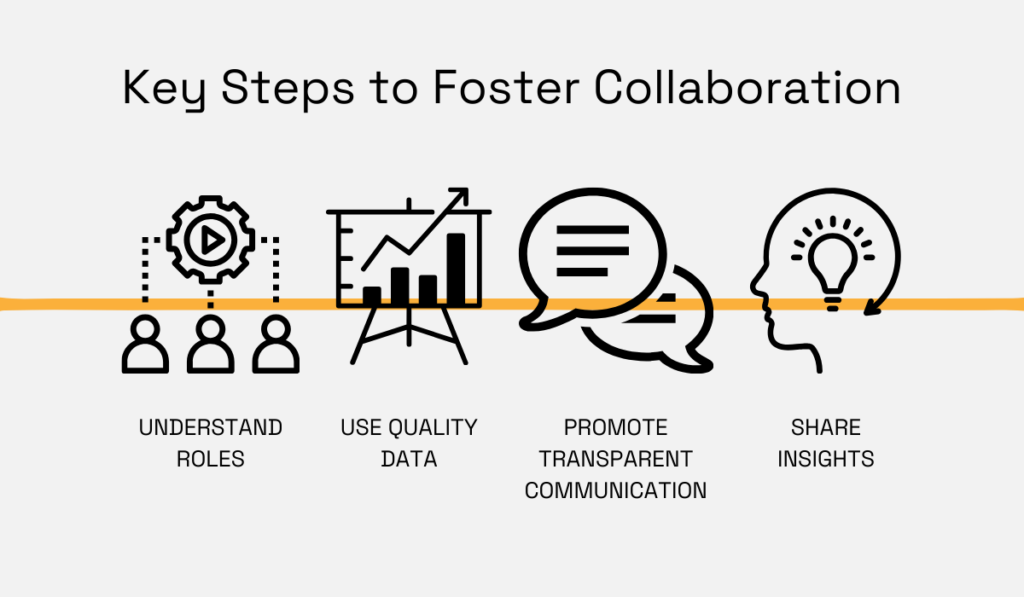
Source: Veridion
Now, remember when we talked about the need to improve data quality?
We highlighted that many non-procurement experts and stakeholders lack confidence in the accuracy of procurement data.
It’s crucial to change this perception.
This can be achieved by being more transparent about how you manage your procurement data—what the data sources are, and how old the data is.
After that, you should openly share insights with your stakeholders and explain how these insights can influence and benefit the entire company.
Let’s illustrate this with an example.
Think about a retail company that regularly analyzes sales data and notices a decline in the sales of a specific product.
Suppose they foster collaboration with other departments and have a data-driven company culture.
In that case, this sales data can trigger further investigations across various departments.
For instance, the marketing department may examine customer feedback and market trends, leading to the discovery that changing customer preferences are responsible for declining sales.
This collaborative effort can result in a strategic decision to adjust their product offerings.
This simple example demonstrates how collaborating on data management can positively impact a company.
But you already understand this concept, and now it’s time to share this knowledge across departments.
Doing so will create an environment where data is not just a valuable asset within the procurement department but a driving force for success throughout the entire organization.
In this article, we’ve highlighted five practices to make your procurement data management more efficient.
Essentially, the key to achieving this lies in selecting the right tools for collecting and analyzing the freshest and highest-quality data.
Another important aspect is ensuring that every member of your procurement department understands their role in data management.
After analyzing the data, you can extend its reach to other departments, fostering collaboration and ensuring that procurement data serves as a reliable source of insights for all.
This is the path to efficient procurement data management and leveraging your data for well-informed decision-making.